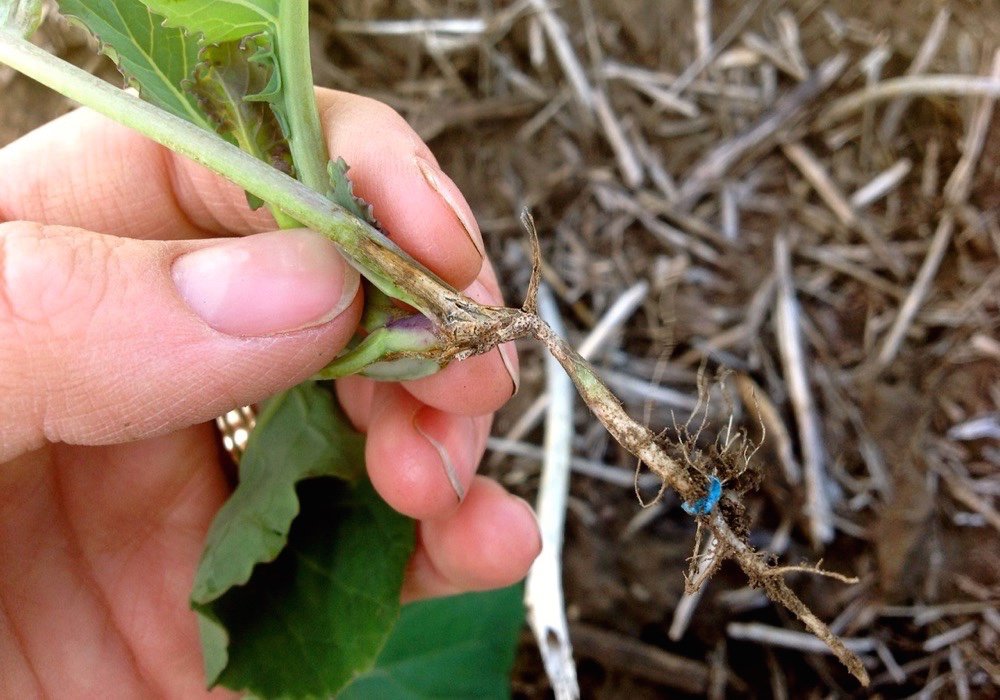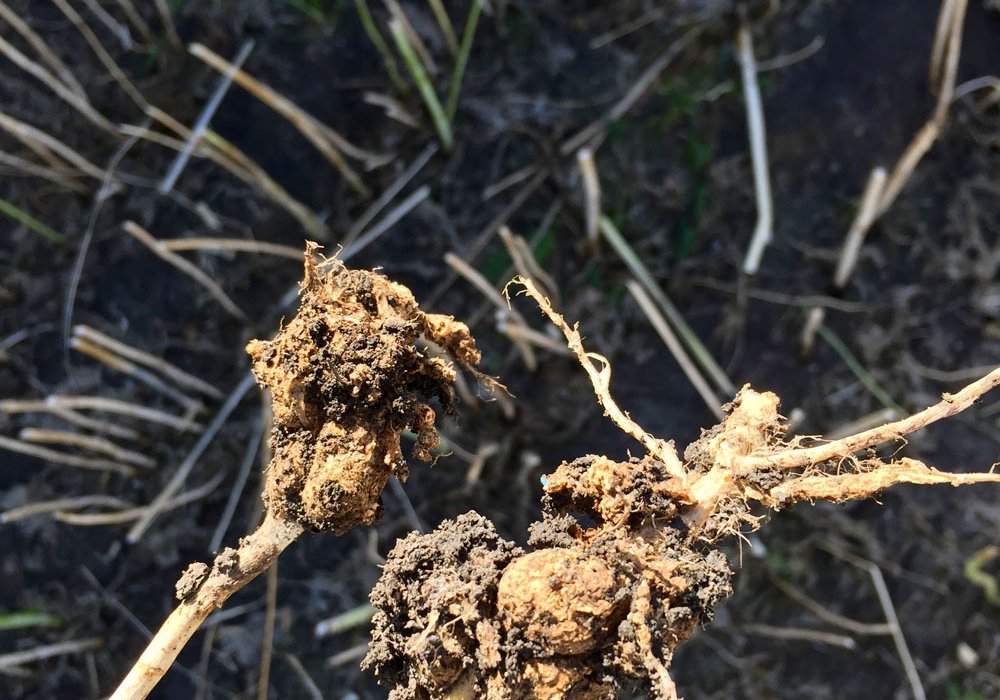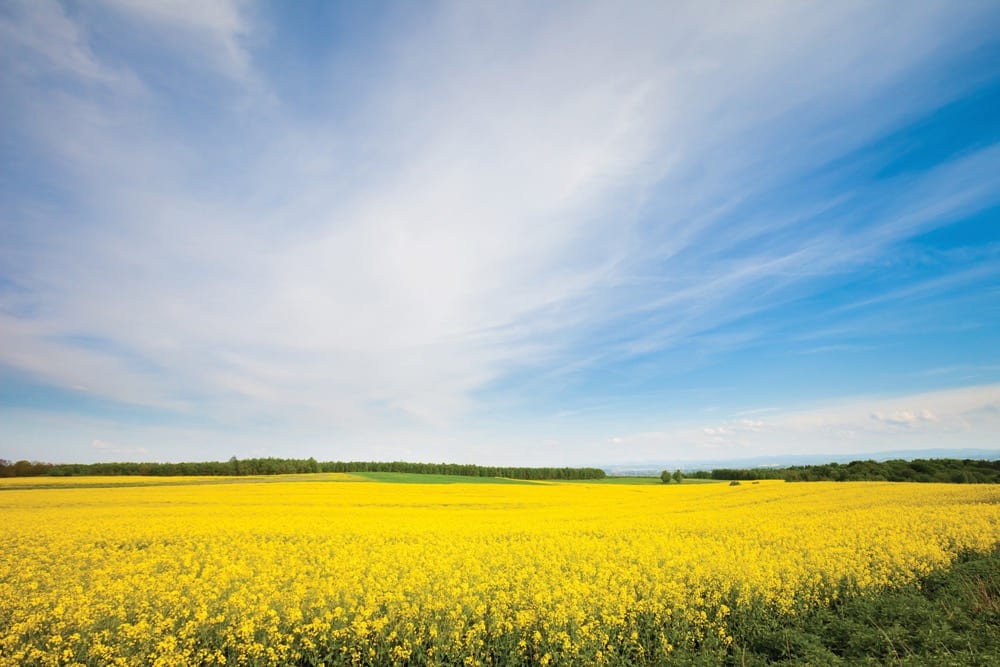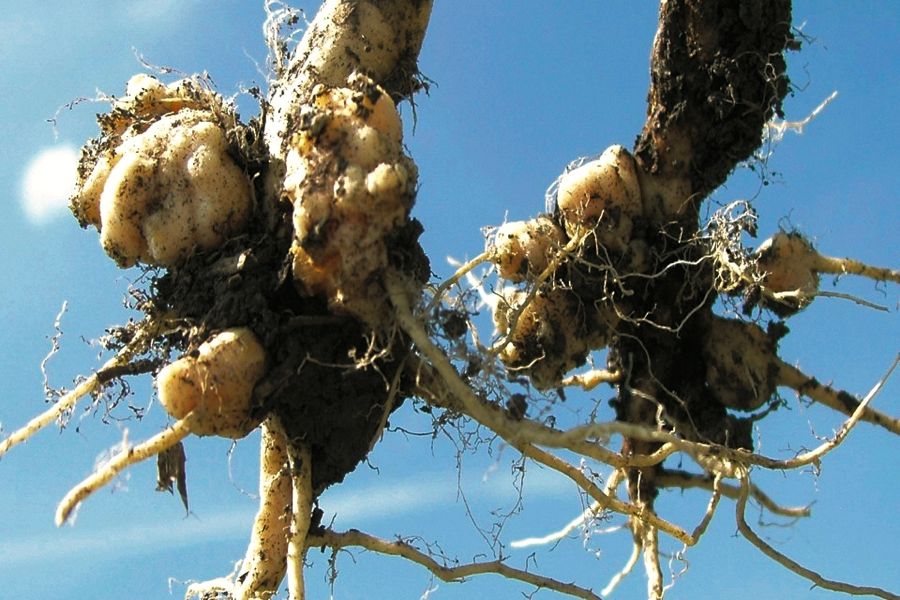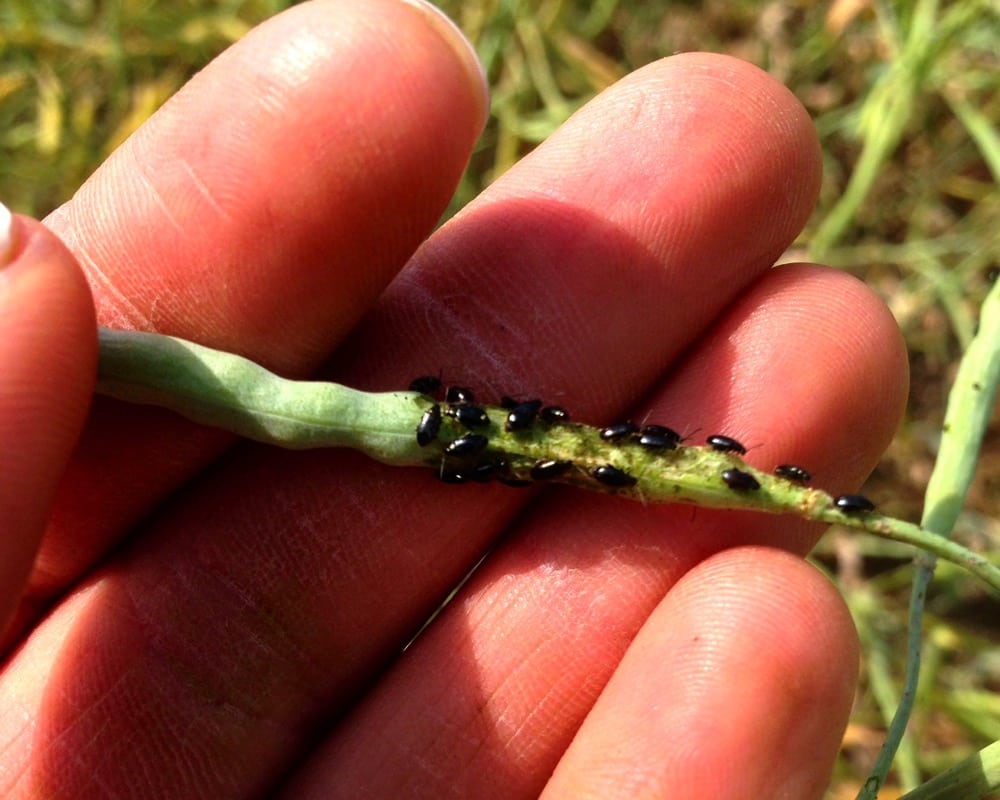Be ready to recognize these major diseases in your canola crop this summer

Is that canola crop afflicted by blackleg, root rot, both, or something else entirely? It’s a messy question farmers and agronomists encounter every year. Presenters tried to untangle those problems at CanoLAB in Vermilion this winter. Here are four diseases to watch for in canola fields this summer, and tips on diagnosing them.
1. Blackleg

Blackleg produces a dry rot, said Clint Jurke, agronomy director for the Canola Council. That turns the stems woody. Cankers look like the rough, knotted bark you would see on a tree, he added.
“If you’re walking into a field and you’re seeing a bunch of plants that are falling over and they look really woody at the base, (that’s a) pretty good indication that you might be dealing with blackleg,” he said.
But cankers alone don’t make a blackleg diagnosis. The next step, said Jurke, is to look for the fruiting bodies produced by the fungi, called pycnidia. The pycnidia look like spots of pepper. Farmers can find them within cankers.
If you see pycnidia in cankers “you can stop right there,” said Jurke. Blackleg is the only canola fungus that produces pycnidia.
“At swathing time you’ll see lots of pycnidia. But if you’re going out in flowering time looking for pycnidia, it’ll be a little bit hard to find.” If farmers or agronomists suspect blackleg, it’s time to bring out the scissors. Pull plants, clip at the base of the stems, and look for blackened tissue inside the stem’s crown.
If farmers confirm the variety’s blackleg resistance has fallen, they shouldn’t grow that variety again next time canola is in the rotation, Jurke said.
“All this old residue is going to spit out spores that are going to be able to overcome that resistance gene,” said Jurke.
2. Sclerotinia

Blackleg isn’t the only disease to leave lesions on canola plants. Sclerotinia also causes lesions.
Krista Zuzak, research technician with Alberta Agriculture and Forestry, pointed out the differences.
Blackleg lesions tend to start at the soil level and move up, she said. Sclerotinia lesions can be found lower on the plant as well, but they’re commonly found in the leaf axles.
“Sclerotinia lesions are a lot softer,” she added.
Around harvest, plants might turn white or grey. But that doesn’t necessarily mean the plants have sclerotinia, Zuzak said. “It can be grey from blackleg, and bleach in the sun, and become quite light.”
To figure out whether those older plants have sclerotinia, she recommended pulling them and twisting the stalks apart.
Plants infected by sclerotinia will shred when twisted. Blackleg will cause the plants to “rip cleaner” as the girdling will have weakened the plant, she explained.
Another sign of sclerotinia is sclerotia inside the plant. The sclerotia will look like mouse droppings, Zuzak said. Those sclerotia will survive in the soil. The next year the sclerotia may infect the crop by growing apothecia (mushrooms that release spores), or growing mycelia that reach plants.
3. Root rot

There are several pathogens implicated in root rot, including rhizoctonia, fusarium, and pythium.
Rhizoctonia is the main suspect in brown girdling root rot, which is the most serious root rot afflicting canola.
All canola growing areas see root rot from time to time. According to the Canola Council website, brown girdling root rot is widespread the Peace River region, causing more yield loss than all the other diseases. B. rapa varieties have greater susceptibility, the Council states.
Jurke said plants sick with root rot will not have cankers or pycnidia. The insides of stems will either be clean, with no blackening, or with some brown.
The Canola Council states early in the year light-brown lesions will form on the taproot or the main lateral roots, below the soil line. Those lesions enlarge, sink, and girdle the taproot. Those plants can be ripped out by wind or die from desiccation. They also tend to ripen before setting seed.
Jurke pointed out that canola can have both blackleg and root rot. Those plants will have cankers, as well as the typical root rot symptoms.
Blackleg and root rot together are a disaster which will create a big yield loss, said Jurke. When faced with such a double whammy, farmers need to remember that the blackleg populations in their field must have evolved to get around the variety resistance.
“It doesn’t really matter if there’s root rot in the root or not. If you’re finding blackleg here, the (blackleg) resistance is not working,” said Jurke.
4. Verticillium wilt

Verticillium wilt is a big problem in Europe’s winter oilseed rape, said Zuzak. It’s also been found in Manitoba, but Manitoba is not Sweden.
“In spring canola, we’re not really sure exactly what kind of infection potential it has,” she said.
Farmers and agronomists can spot this disease by watching for “half symptoms,” Zuzak said. For example, fusarium wilt will yellow half a leaf. Half the stem may also turn brown, or there may be a brown stripe, with very straight margins, she added.
The disease forces the plant to shed its own cubicle, Zuzak said. Plants will also shed their own cuticles while still growing, she added, exposing the microsclerotia.
Verticillium wilt is a later-season infection, so farmers and agronomists can scout stubble after swathing, or even the next year. The plant produces lots of microsclerotia after it’s cut, between the cuticle and the pith, Zuzak said. Those microsclerotia look like dirt specks.
The microsclerotia also inoculate the soil. Right now there are no resistant cultivars. Zuzak said the management recommendations are similar to clubroot. And although the resting spores are long-lived in the soil, a longer rotation should reduce the inoculum, she added.
There haven’t been many disease trials yet on spring canola, she added.
“So we’re not really sure about the extent of this threat yet, other than it’s soilborne. And there’s nothing to really stop soilborne pathogens from crossing borders.”




